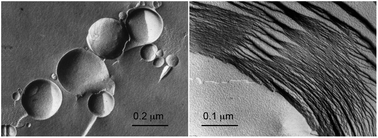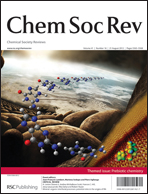Liquid crystalline nanostructures: organizing matrices for non-enzymatic nucleic acid polymerization†
Abstract
When a mixture of amphiphilic compounds and solute molecules undergoes dehydration, a liquid crystalline multilamellar

- This article is part of the themed collection: Prebiotic chemistry

 Please wait while we load your content...
Please wait while we load your content...